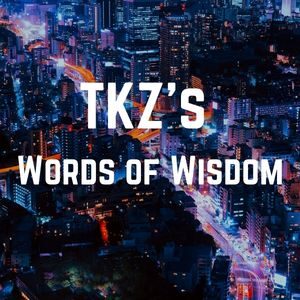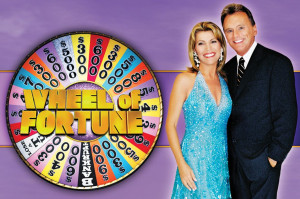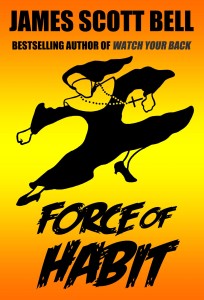by James Scott Bell
@jamesscottbell
 We’re over halfway through the year (ack!), so it seems an apt time to catch up on a few publishing business items. Here are five that recently caught my eye. Additions and prognostications are welcome in the comments.
We’re over halfway through the year (ack!), so it seems an apt time to catch up on a few publishing business items. Here are five that recently caught my eye. Additions and prognostications are welcome in the comments.
Traditional Publishing’s Flat Sales
This from Jane Friedman’s Hot Sheet (subscription required; reprinted with permission):
For the first five months of the year, the Association of American Publishers reports that adult book sales are flat versus 2022 across all formats (print, ebook, audio), while children’s and YA sales fell by nearly 8 percent versus last year. The main weakness is in children’s hardcovers; as we reported last year, Barnes & Noble has become reluctant to stock such books due to high returns.
***
So far Big Five publisher Hachette has seen profits decline 16 percent versus last year; the company blamed a lighter publication schedule, lack of bestsellers compared to 2022, and a downturn in the US market. CEO Michael Pietsch said, “Sales of backlist titles, children’s and Christian books, and general and prescriptive nonfiction faced particular challenges in a down market. … Backlist sales began to grow toward the end of the first half, and we anticipate a considerably stronger second half.”
Layoffs at Penguin Random House, Hachette, HarperCollins
Penguin Random House has been laying off staff. Some employees have accepted a “voluntary separation offer” (VSO); others have been given the pick slip. PRH CEO Nihar Malaviya put it this way in an email to the company:
As you know, the book marketplace has had several shifts over the past years. At Penguin Random House, we, too, have experienced these shifts and changes, especially during the last months. We are halfway through 2023, and while the book market has grown, particularly over recent years, we have also faced significantly increased costs in all areas across the board, and we expect these increases, as well as inflation, to continue….
We have been taking various actions over the last months to adapt our business to these market realities, and I’m sad to share the news that yesterday some of our colleagues across the company were informed that their roles will be eliminated. Everyone being affected has been informed directly in individual meetings. We long sought to avoid these actions, but unfortunately could not do so. This was the hardest decision I have had to make as a leader.
The same challenges are happening at Hachette and HarperCollins. HarperCollins is “working toward a 5 percent workforce reduction.”
Kindle Unlimited Payout is Up
In belt-tightening times, a swath of voracious readers opt into a subscription model in lieu of buying books. Amazon’s Kindle Unlimited is the largest subscription-reading service, and offers indie authors a cut of the pie, promotional opportunities, larger royalties in certain international markets (when the book is purchased), and preferential placement in their online store. For these benefits, the ebook must be exclusively in KU for a 90-day period.
KU authors are paid by the total number of pages read (KENP) in any given month. The KENP payout has hovered at just under 1/2 a cent per page for the past year. At the end of every month, Amazon sets aside a pot of money called the KDP Global Fund, to be paid out to authors whose titles are enrolled in KU. Each author receives a chunk of the pot proportional to how many pages of their titles were read. The more pages read, the bigger the payout. According to one source, for the first half of the year (H1):
[T]he KU pay-out has reached $278.2 million. The figure for H1 2022 was $251.2 million, so an increase year-on-year of $27 million, or 10.7%.
[It’s] worth adding here that in June 2022 the KU pay-out for the month was $38.1 million. This year, 2023, the pay-out was $47 million, which you can no doubt work out is $8.9 million up, but will perhaps be interested to know equates to a 23% rise. And on past performance we can expect to see a December pay-out of about $50 million if Amazon adheres to that pattern.
This tells me Kindle Unlimited remains a solid option for indie authors who are revenue driven. There has yet to be a strong enough competitor to offset KU’s exclusivity advantages, though Scribd has a footprint, and Rakuten’s Kobo Plus became available in the U.S. earlier this year. We await developments…
Influencer-Driven Publishing
A new publishing model is being rolled out by an outfit called Bindery. Recognizing that internet influencers—or “tastemakers”—are a powerful marketing avenue, the company is setting up a membership platform for these “bookish curators” to monetize their “communities” and use a portion of revenue to become, essentially, a book imprint.
Bindery is a membership platform like Patreon or Substack, but designed for bookish curators. Tastemakers invite core fans into an exclusive community space for access to them and their extended content. Unlike other membership platforms, tastemakers with large communities on Bindery, upon invite, may opt to use a portion of their earnings to fund the publication of new books by authors their community will love. Use your platform to make it possible for an author to get a meaningful book deal, partner with them to bring it to life, and share in the book’s success.
Manuscript acquisitions will happen this way:
To find titles, Bindery will deal directly with literary agencies, approaching them … to solicit manuscripts that fit the interests of individual tastemakers. From there, Bindery will hand over submissions to tastemakers for consideration. Tastemakers’ evaluation process may be “in dialogue with their paywalled community members,” said [co-founder Meg] Harvey…. She added, “Once tastemakers identify a book they’re excited about and want to greenlight, Bindery offers a contract to the agency—between the author and Bindery—and manages the author relationship directly.” Bindery offers a standard $10,000 advance.
When the books hit the market, authors will make 50% of the net earnings, tastemakers 25%, and Bindery the other 25%.
Is Bindery’s vision of scores of micro-imprints “a recipe for an oversaturated market” (PW) or “a return to the days of independent publishers leading the industry: taking risks, uncovering new voices, and igniting a passion among readers who want to see more creativity and diversity in the publishing ecosystem” (co-founder Matt Kaye)? Time, as they say, will tell.
How Readers Pick What to Read Next
Over at Written Word Media, a survey found that the book description and author are the most significant factors for how readers choose a book, followed by book cover and average review score. While all are obviously important, the description is vital. But writing marketing copy is often not in an author’s skill set.
Which is why so many authors are using AI to generate ad copy. I know it’s the shiny new toy, and has some beneficial uses (like brainstorming). But my advice is to learn how to write copy on your own. It’s really not that hard and it’s good exercise for your creativity muscle. You can start with Sue’s post on the subject. Practice, write, show it to friends, get feedback.
Over to you. What have you noticed lately regarding the buying, selling, and publishing of books?


 Clare’s
Clare’s 












